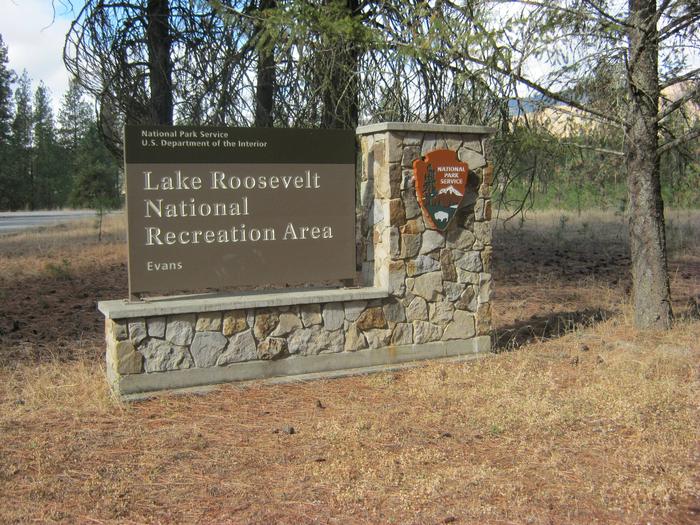Directions
Take Washington state Highway 395 north from Spokane. Travel 83 miles to the town of Kettle Falls, take Highway 25 north and travel 11 miles. Follow signs to the campground. It is on the west side of the highway.
Phone
509-754-7889
Activities
BOATING, HISTORIC & CULTURAL SITE, CAMPING, INTERPRETIVE PROGRAMS, FISHING, HIKING, PICNICKING, WATER SPORTS, WILDLIFE VIEWING, DAY USE AREA, SWIMMING, CANOEING, WATER ACCESS
Keywords
EVAN,LAKE ROOSEVELT NRA
Related Link(s)
Washington State Road Conditions
Overview
Evans Group Camp, along the northern shoreline of Lake Roosevelt, is the most northern campground on the lake that can be reserved. The site is long and narrow, an orientation that allows for a fantastic, clear view of the lake from every vantage point. There is one group campsite that can accommodate one group of up to 25 people at a time.
Lake Roosevelt is a 130-mile lake on the Columbia River created by the Grand Coulee Dam. Named after President Franklin D. Roosevelt, it is part of the Lake Roosevelt National Recreation Area and managed by the National Park Service.
Recreation
The boat launch provides year-round access to the lake. Boating, fishing, swimming and water skiing are activities that can easily take place from the campground. Campers might also enjoy relaxing and taking in the beautiful view or attending educational ranger programs.
Facilities
Evans Group Camp can be reserved March through November. Great for family reunions and other medium-sized gatherings, there are picnic tables, drinking water available seasonally, fire pits, water access and a playground within the facility.
Natural Features
Evans provides ample shade with thick forests of ponderosa pine, douglas fir and maple trees. The lake area is abundant with wildlife, including moose, elk and deer. Quite a few bald eagles have been spotted around Evans, and dozens of species of fish inhabit the lake, such as walleye, bass, rainbow trout, salmon and sturgeon. Fishing for sturgeon is now allowed during a short season. Much of the water in the originates from glaciers and snow in the cold, high Canadian Rockies, though temperatures are pleasant to swim in during summer.


